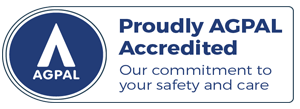By Simon DuBois, Psychologist & Clinical Director at The Health Lodge
Understanding our nervous system is key to mastering stress, healing trauma, and cultivating emotional resilience. At the heart of this lies the Autonomic Nervous System (ANS)—our body’s unconscious regulator of safety and survival. Polyvagal Theory, developed by Dr. Stephen Porges and Deb Dana, maps the ANS like a ladder, helping us understand how our body responds to different states of safety or threat.
At the top of the ladder is the Ventral Vagal state. This is the realm of calm connection—where we feel safe, socially engaged, present, and grounded. It’s the state where healing and regulation thrive. This is where we sit within our ‘window of tolerance’ and can manage the stressors coming our way.
In the middle of the ladder sits the Sympathetic state, our fight-or-flight response. Here, the body prepares for danger with increased heart rate, shallow breathing, and heightened alertness. It’s a necessary system, but when stuck here, it leads to chronic anxiety, irritability, or panic.
At the bottom lies the Dorsal Vagal state, which brings shutdown, numbness, disconnection, and fatigue. When the stressors around us feel too overwhelming to address, our Dorsal Vagal nervous system shuts us down until the threat passes.
The good news? We can climb this ladder. Practices like breathwork and contrast therapy offer reliable, embodied ways to move from dysregulation back into the ventral vagal state. And when we find ourselves in the sympathetic or dorsal states, we can be in them with Ventral Vagal grounding and consciousness.
Breathwork is one of the most direct ways to engage the vagus nerve and enhance vagal tone—a marker of how efficiently the nervous system can keep one foot in ventral vagal regulation and move up the ladder out of Dorsal and Sympathetic states. Considered breathwork techniques stimulate the parasympathetic system, helping us regulate arousal or shut down, shifting us out of survival modes.
Contrast therapy (alternating between hot and cold exposure) activates the stress response in a controlled way, followed by a guided recovery phase. This creates a kind of “nervous system workout,” improving our capacity to tolerate discomfort and return to calm. Over time, this builds flexibility in our autonomic responses and widens our Window of Tolerance.
Together, these practices retrain the nervous system to detect true safety and shift more fluidly between states. Instead of being hijacked by anxiety or collapse, we learn to regulate, reconnect, and respond with resilience, moving up and down the autonomic ladder fluidly and consciously.
By mastering the autonomic ladder, we’re not just managing stress—we’re changing how we relate to it. We’re building an awareness of our nervous system that feels accessible, safe, and available enough to engage with and gently influence.

Simon DuBois, Psychologist & Clinical Director at The Health Lodge
Simon brings over 20 years of experience supporting people in the Byron Shire. He is known for helping patients explore psychological distress in a relaxed, supportive environment.
Simon uses a range of therapeutic approaches, including Cognitive Behaviour Therapy (CBT), Schema Therapy, and Mindfulness, alongside trauma-focused therapies like Eye Movement Desensitisation Therapy (EMDR), Internal Family Systems (IFS), and Polyvagal Therapy. He also offers non-invasive Transcranial Direct Current Stimulation (tDCS) for treating depression and pain.
Advocating for an integrated approach, Simon works alongside Doctors, Naturopaths, and somatic therapists to improve wellness outcomes. Recently, he has incorporated Polyvagal-informed techniques into his practice to further support clients.




